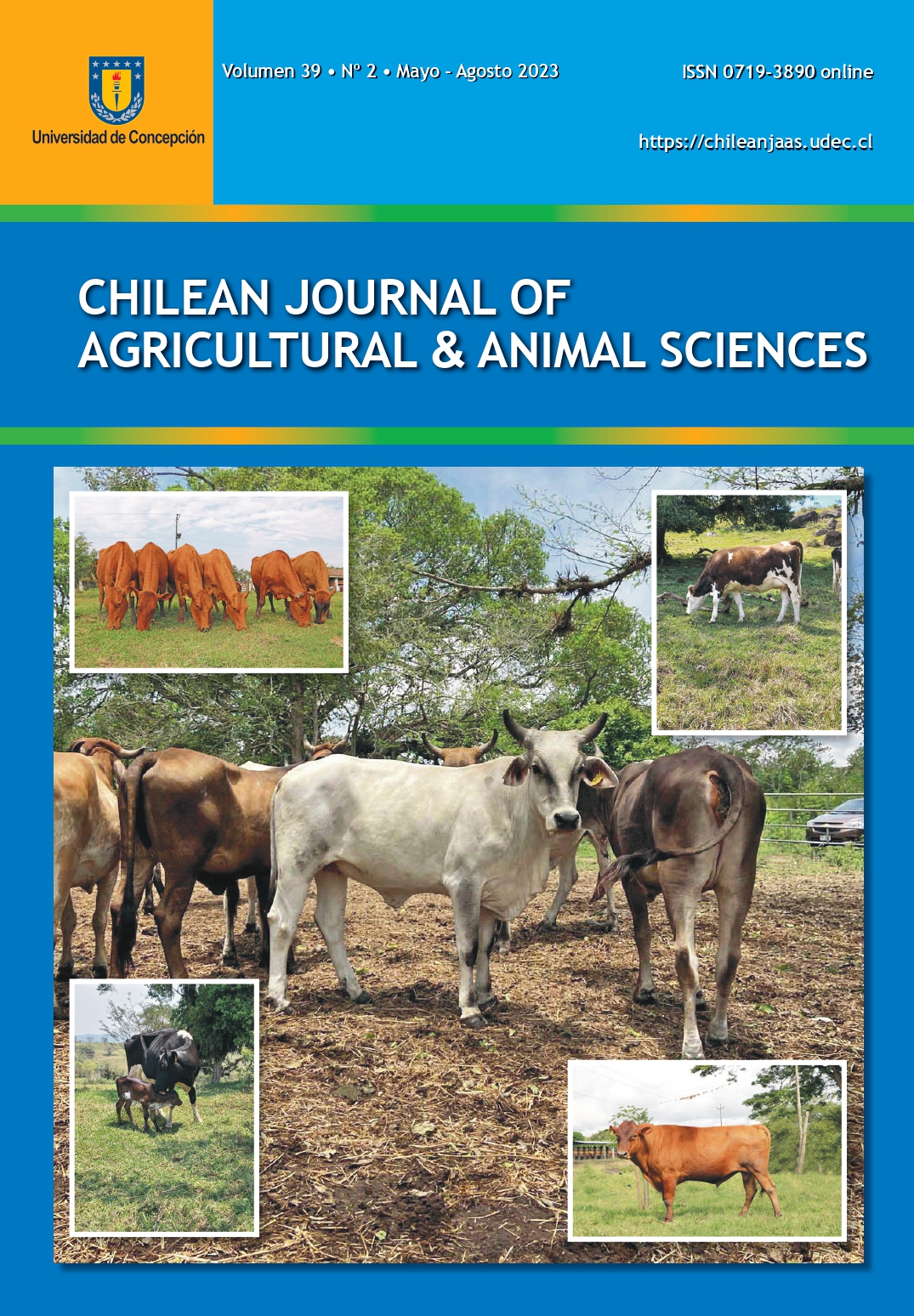GENE EXPRESSION OF HEAT SHOCK PROTEINS IN DUAL-PURPOSE CATTLE EXPOSED TO HEAT STRESS CONDITIONS
DOI:
https://doi.org/10.29393/CHJAA39-13EGVR100013Keywords:
Thermo-tolerance, hsp70, acclimatationAbstract
The increase in environmental temperature is affecting the thermal environment to which cattle are exposed, decreasing productive and reproductive performance. Heat shock proteins (HSP) have been used as the main indicator of bovine adaptability to heat stress conditions. The expression of hsp60, hsp70, and hsp90 genes was analyzed in 33 crossbred female cattle (Holstein x Zebu and Brown Swiss x Zebu), lactating, and non-lactating. Animals were sampled two times per day in the state of Veracruz, and expression was estimated by using real-time PCR with fluorescently labeled probes. Statistical analysis of gene expression was carried out by a repeated measures model using PROC MIXED of SAS. The expression of hsp60 and hsp70 genes at midday was different (p < 0,001 and p = 0,01, respectively) from that manifested during the early morning. The results of hsp gene expression may help in developing future crossbreeding programs by recognizing animals that can maintain higher homeostasis under heat stress conditions.
Downloads
Published
How to Cite
Issue
Section
Copyright (c) 2023 Vicente Eliezer Vega-Murillo, Angelica Torres-Heredia, Francisco Tobías Barradas-Piña, Maribel Montero-Lagunes, Juan Prisciliano Zárate Martínez, Luis Felipe Guzmán-Rodríguez, Guillermo Martínez-Velázquez, Angel Ríos-Utrera, Moisés Montaño-Bermúdez, Raymundo Salvador Gudiño-Escandón

This work is licensed under a Creative Commons Attribution 4.0 International License.







